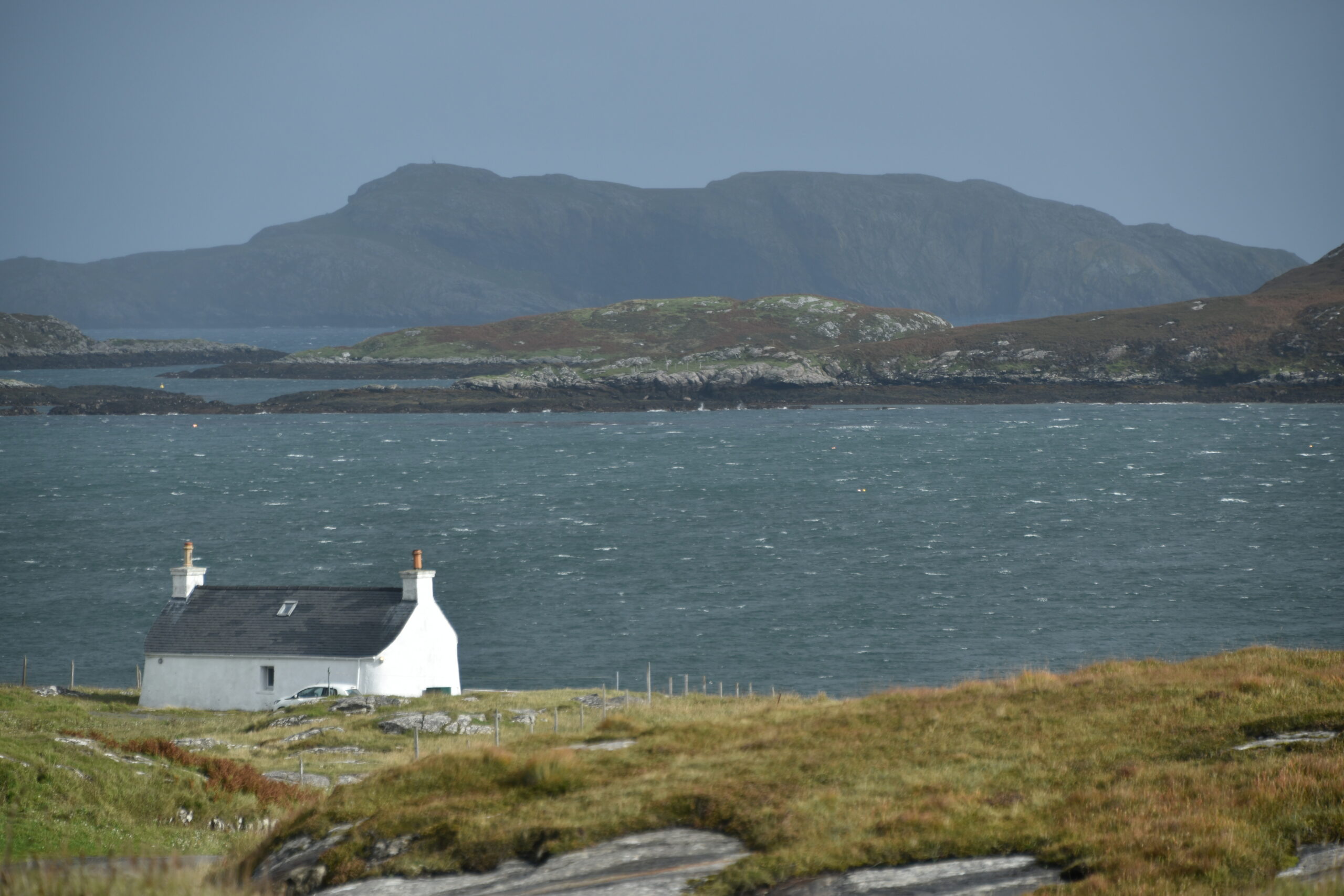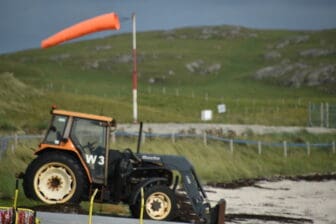
[Sept. 2023] At the Castlebay Hotel where we stayed on Barra Island in the Hebrides of Scotland, the check-out time was 10:30, which was as early as a Japanese inn.
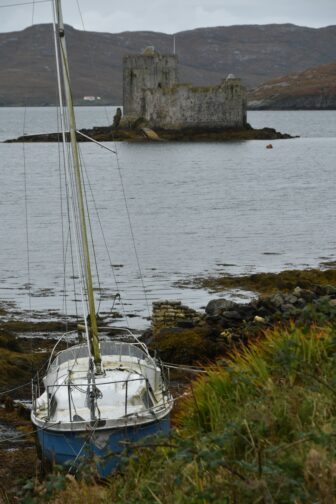
Moreover, it says that it closes from 11:00 to 18:00.
After a heavy breakfast starting at 8:30, which included bacon and black pudding, which are unique to Britain, we asked if we could leave our luggage there, and the hotel stuff casually replied, “Leave it in the lounge.”
It’s probably because it’s a safe island with no escape.
The cost for one night’s accommodation, dinner, and whisky was £207.
Our flight back to Glasgow leaves at 3:55pm, so we have plenty of time.
We had taken a taxi tour all over the island, and the weather looked like it was about to start raining, so we did not know what to do.
In the end we decided to take a walk around this area.
We walked around the bay, looking at Kisimul Castle located offshore in the bay on our right.
According to legend, Kisimul Castle has been the base of the Scottish clan MacNeil since the 11th century, but it has only been documented since the 16th century.
In the summer, tourists can take a boat to the castle, but by this time, at the end of September, that service had ended.
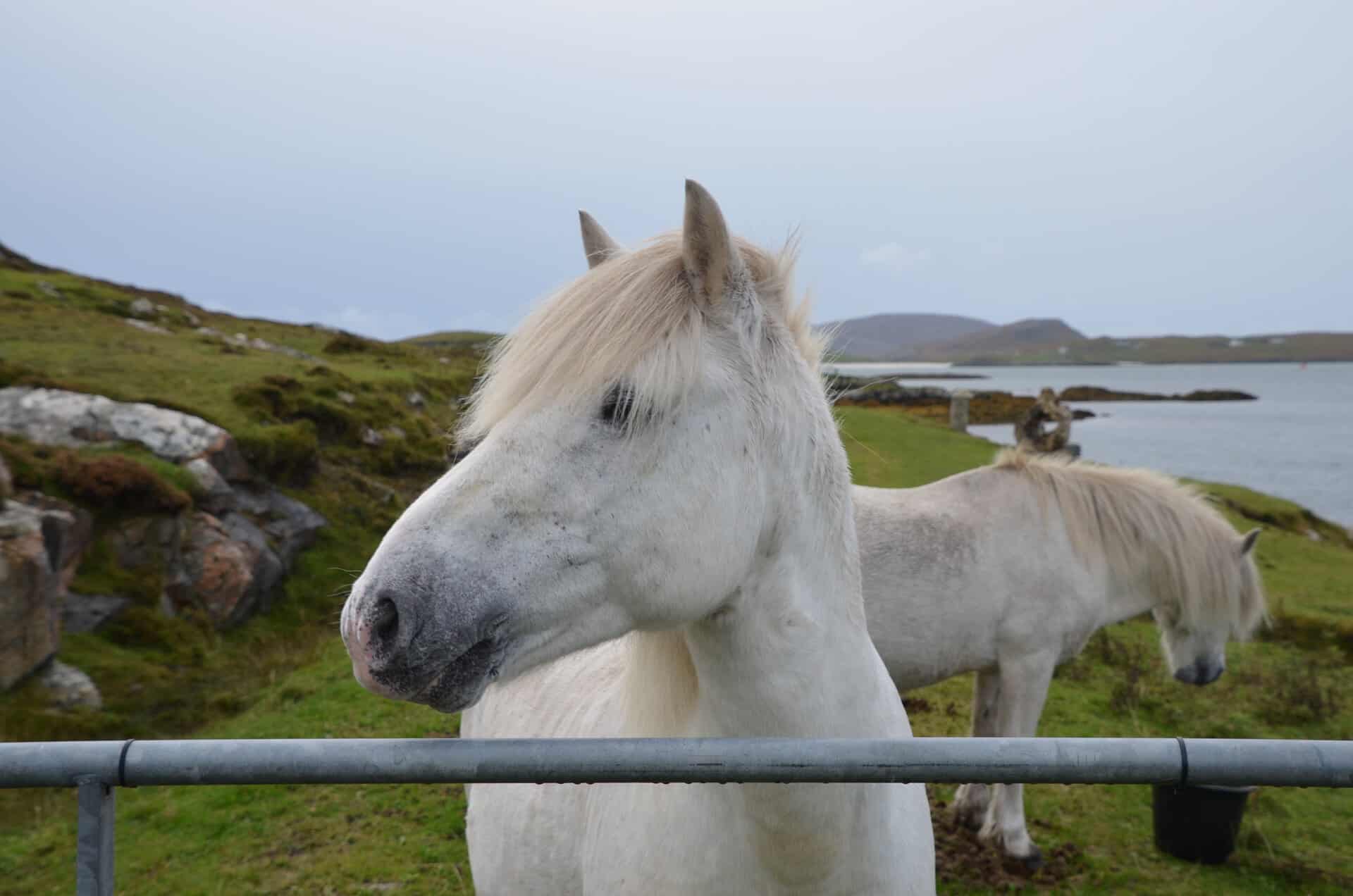
Just like the day before, we were walking and enjoying the desolate scenery, feeling like it was the end of the world, when we came across a fence.
There is a gate so you can pass through, but there are white horses hanging out on the other side.
As we were hesitating to see if we could pass, a car came and stopped, and a lady came out.
She said, “I’ve come to feed the ponies. It’s feeding time, so you had better not go in now,” and she fed them with some buckets.
Two of the three were male, apparently.
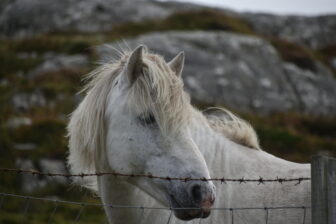
One of them was the father who was 30 years old.
Another young pony is a stallion for female ponies around this area.
This pony is a breed called the “Eriskay pony,” and according to her, it is on the verge of extinction.
They are originally from a nearby island called Eriskay Island.
“There are fewer of them than giant pandas,” said the lady.
She told us that these ponies used to transport peat, and good for children to ride on because they are docile.

Thanks to the ponies and the lady we happened to meet, we became wiser.
We once encountered wild ponies on Dartmoor in southwest England, but this one’s fair colour makes it even more eye-catching.
And they reminded me of the donkeys on Asinara Island in Italy.
After the lady left, we waited for a while for the horse to finish eating, but they were taking a long time, so we turned back and continued our walk, taking pictures.

